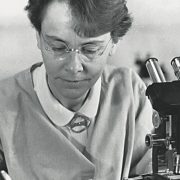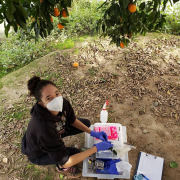Plant Scientist Highlight: Barbara McClintock
 This month we are featuring Barbara McClintock. She was at the cutting edge of her field and many of her discoveries weren’t accepted until years later. She has contributory greatly to the fields of genetics, ethnobotany, and paleobotany.
This month we are featuring Barbara McClintock. She was at the cutting edge of her field and many of her discoveries weren’t accepted until years later. She has contributory greatly to the fields of genetics, ethnobotany, and paleobotany.
Dr. McClintock grew up as an independent and determined child. She graduated high school early and when her university did not offer her the degree she wanted, she received a MS and PhD in botany and applied her studies to the field of cytogenetics. When she arrived at the university, despite her tendency to be alone, she started to branch out, being invited to join a sorority, joining a jazz band, and participating in student government.
Barbara McClintock’s discoveries transformed the field of genetics. She discovered “jumping genes”- transposable pieces of DNA that can move throughout the genome. This answer the puzzling question of why simple inheritance could not account for all the phenotypes seen, for example, in her model of speckled and differently colored corn kernels. She did have trouble though, being a pioneer in her field. Many of her ideas were not readily accepted and treated with skepticism. She eventually stopped publishing her work and pursued research in Central and South America instead. She studied the wide varieties available in Mexico, Peru, and Colombia to learn about the evolution and ethnobotony of maize. Eventually her work was recognized for its valuable contribution to the field and she was widely acknowledged with a variety of awards.
For more information, read these articles by Nature or the NIH on Barbara McClintock.
Download the graphic hereP.









